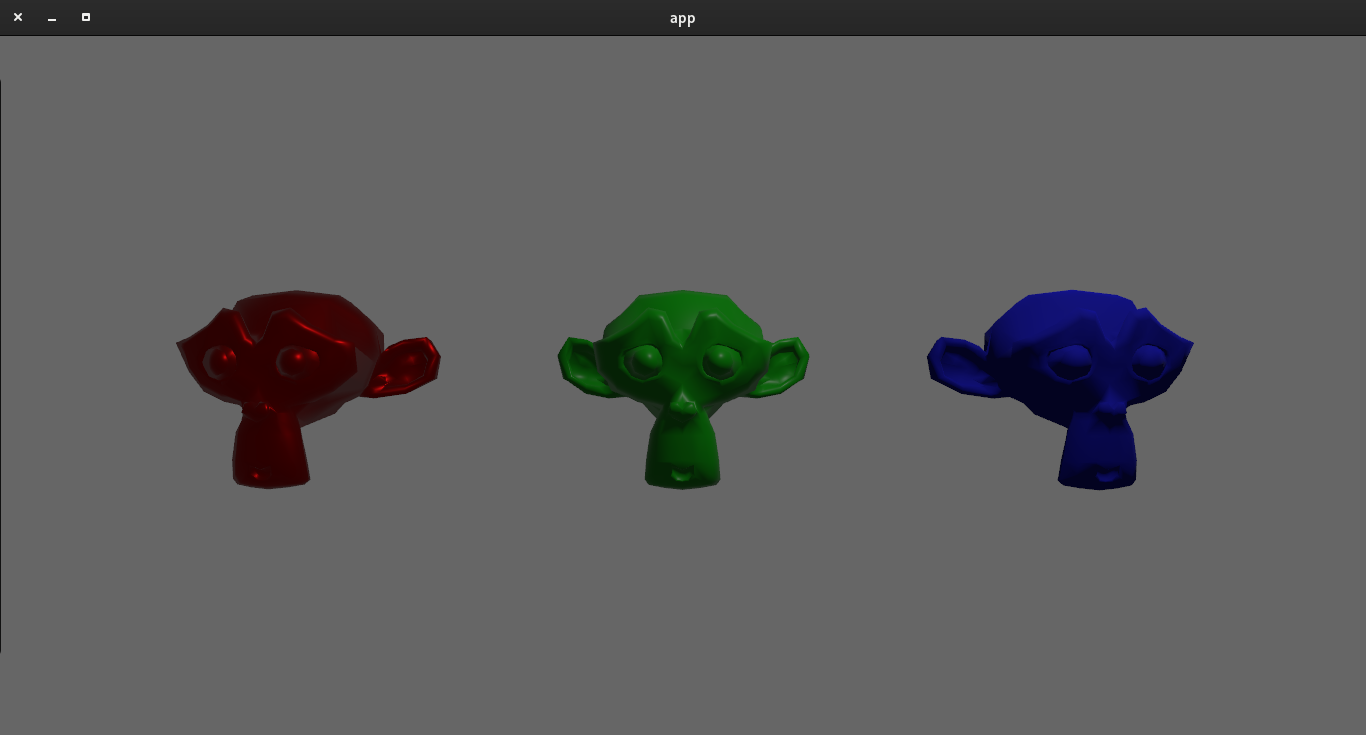bevy_blender is a Bevy library that allows you to use assets created in Blender directly from the .blend file.
- This project was heavily modeled after the bevy_stl project, so thanks nilclass!
- Much of the heavy lifting is accomplished using the Blend crate, thanks lukebitts!
- Add
bevy_blenderto yourCargo.tomldependencies. - Add
bevy_blender::BlenderPluginplugin to the bevyApp - Load Blender assets (see examples)
bevy_blender makes use of Bevy's asset server. If Bevy detects that you are using a .blend file as an asset, bevy_blender will load every supported asset into the asset server. If you have a .blend file with a large asset that you do not wish to be loaded, you must prepend that asset's name with an underscore.
If the asset name in Blender starts with an underscore, it will not be loaded. You can use this to have extra assets in the .blend file that you do not want loaded to the AssetServer.
- Meshes (using
AssetServer) - Basic, not node-based, materials (using
AssetServer); if a nodes based material exists, a warning will be given and a default clay-like material will be added to the asset server with the same name. - Objects (using
BlenderObjectBundle); the object's mesh and material will be pulled from the asset server, and if the Blender object did not have a material attached to it, a default pink material will be given.
fn main() {
App::build()
.add_plugin(bevy_blender::BlenderPlugin)
.add_startup_system(setup.system())
// ...
.run();
}
fn setup(commands: &mut Commands, asset_server: Res<AssetServer>) {
// Spawn the Suzanne Blender object with children and its Blender transform
spawn_blender_object(&mut commands, &asset_server, "demo.blend", "Suzanne", true, None);
.expect("Error spawning Blender object");
// Spawn the Suzanne mesh with the Red material
commands.spawn_bundle(PbrBundle {
mesh: asset_server.load(blender_mesh!("demo.blend", "Suzanne")),
material: asset_server.load(blender_material!("demo.blend", "Red")),
..Default::default()
})
// ...
}A suite of examples can be found in examples/. Currently, there are three examples, one that shows how to import just a mesh, one that shows how to import just a material, and one that shows how to import whole objects. Simply run cargo run --example=object (or example=mesh, or example=material) to execute it. This will import assets from a .blend file located at assets/demo.blend. For example, running the materials example should look like this:

This project is essentially where I want to take it, at least for the near future. I am currently looking into creating an Open Shading Language based renderer for Bevy, which will open up the possibility to use Cycles materials. I will also be looking at the possibility of updating the Blend crate, as it has not been updated in a couple years. Doing this will allow me to provide better error handling and recovery from it as well (currently it panics at every error). Other tasks I might shoot for in the future are to apply modifiers before importing the mesh, adding first class hot reloading support, and add import support for textures, lighting, rigging, animations, and blend shapes,
If you have other ideas for how this project could be used, please let me know! I would also be more than happy if anybody were to submit a PR addressing these (or other) features
- Only non-compressed .blend files work. Though Blender uses the standard zlib compression (I think), so it should be easy enough to detect a compressed .blend file and decompress it.
- Only Blender Internal Renderer based materials can be imported. The new(ish) nodes based materials used for Cycles and Eevee are based on Open Shading Language (OSL), not OpenGL based shading languages.
- Blender modifiers are not applied before constructing the mesh.
I am using X version of Bevy and Y version of Blender, which version of bevy_blender should I use?
| bevy_blender Version | Supported Bevy Versions* | Supported Blender Versions* |
|---|---|---|
| 0.1 | 0.5.x | <=2.93 |
| 0.2 | <=0.7.x | <=3.1 |
* Versions have not been exhaustively tested and assumptions have been made based off of available documentation.
These benchmarks are provided to give you an idea of relative time needed for importing Blender assets. All benchmarks were run on a computer with the following specs:
- CPU: Intel Core i7-1065G7 @ 1.30 GHz x 8 cores
- RAM: 15.4 GB
- GPU: Mesa Intel Iris Plus Graphics (ICL GT2)
- OS: Manjaro Linux (Linux 5.4.184-1)
Note that the specs of the individual computer you are using will drastically change these numbers. However, this data should give you an idea of how one asset might load as compared to another. You can get these numbers on your machine by running cargo bench.
| Blender Version | Number of tris | Benchmarked import time |
|---|---|---|
| 3.1 | 192 | 596us +- 26us |
| 3.1 | 768 | 2.3ms +- 109us |
| 3.1 | 3072 | 11.2ms +- 475us |
| 3.1 | 12288 | 48.0ms +- 1.3ms |
| 3.1 | 49125 | 205.8ms +- 4.4ms |
- Support for Blender 3+ mesh data was added
- Support for basic (not nodes based) materials was added
- Objects can now be loaded directly.
- ngon polygons are now triangulated using a basic ear clipping algorithm
- Added mesh import benchmarks

